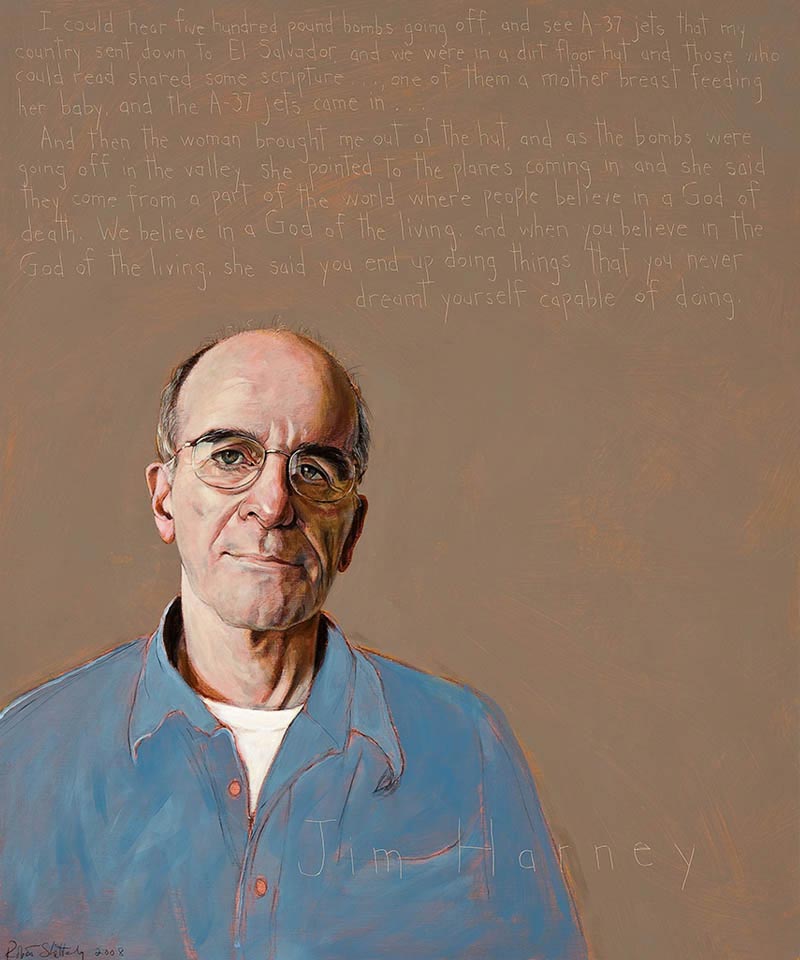The Merriam-Webster dictionary defines the word globalization as “the development of an increasingly integrated global economy marked especially by free trade, free flow of capital, and the tapping of cheaper foreign labor markets.” The dictionary does not define the consequences for people who are squeezed out of this more modern economy. Jim Harney called those people the undocumented, or the excluded. For decades, and up until his death, Harney’s work was to bring a voice, a face, and a story to these undocumented people.
Jim Harney grew up in a Catholic “ghetto” in Boston, Massachusetts where whole Catholic communities, complete with their own schools, hospitals, and churches, lived in isolation from the non-Catholic neighborhoods around them. Harney became a priest in the sixties, and during that decade, two major events occurred that would inform Harney’s world view. The first was the directive from the Second Vatican Council to open Catholicism to the world, in essence opening Harney and the “ghettoes” to interaction and dialogues with their neighbors in the non-Catholic communities. The second event was the Vietnam War, which set Harney onto the activist path he’d follow for the rest of his life.
In 1968, Harney and thirteen other antiwar activists broke into some draft board offices, stole files and burned them with homemade napalm. They came to be known as the Milwaukee 14, and all went to prison for more than a year. Jim Harney, spending much of his time in solitary confinement with only the Bible to read, was released with a new purpose – to follow and spend time with the world´s poor and degraded people.
Armed with a camera, Harney went anyplace and everyplace there was suffering – Haiti, Argentina, Venezuela and beyond. He returned with photographs and stories of the struggles of the poor.
Determined to give voice to the excluded, Harney amassed thousands of photos that he turned into a slide show presentation. He studied finance to better understand and explain how globalization affects the poor. Harney wrote in a profile of one of his subjects, “US citizens in particular bear a responsibility to hear the testimony of the Madres-Mothers of those ´disappeared´ by the US School of the Americas (SOA) graduates and to understand that someone else pays the difference for our ‘bargains’ at the mall.”
In the 1990s, Harney moved to Bangor, Maine and became an Artist in Residence for Posibilidad, a group of activists formed in 1999 that “engages people in conversation around the excluded of society.”
In 2008 after being diagnosed with terminal cancer, Harney planned his own long walk from Boston to Washington, DC to raise awareness of immigration issues and to talk with anyone along the way who would listen. He made it as far as Providence, RI.
His legacy lives on in his images, stories, and his words. Harney said, “I try to use my camera to capture the excluded of the world as subjects of promise and hope….I go on the premise that when people who are not suffering see the pain on this planet, they change. How can we stand tall and take pride as a human being when violence and poverty is taking place in countries where democracy is being created? I try to speak for those who don’t get a chance to speak for themselves.”


